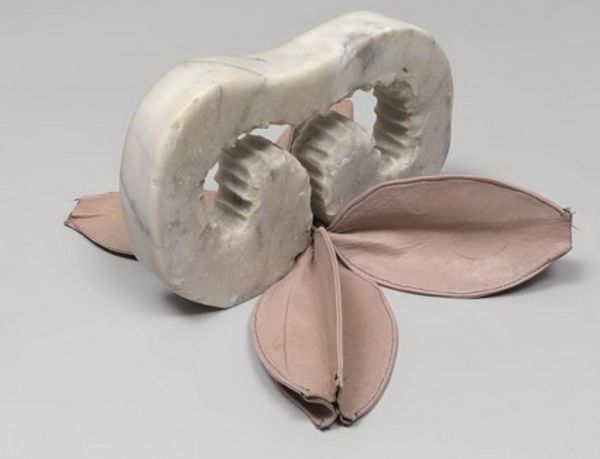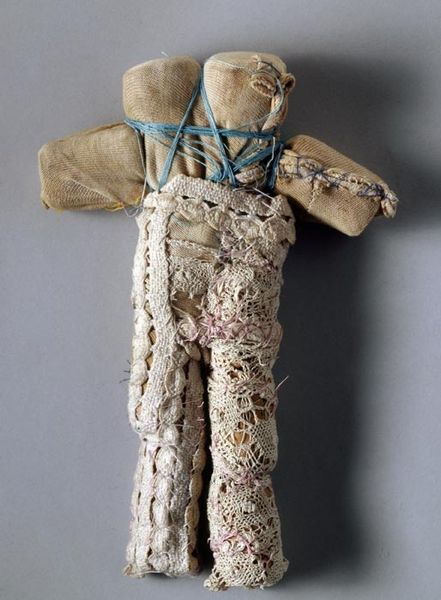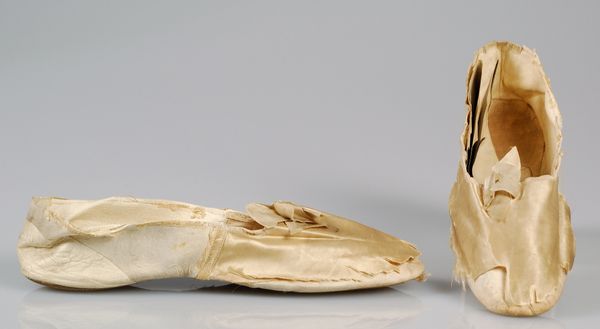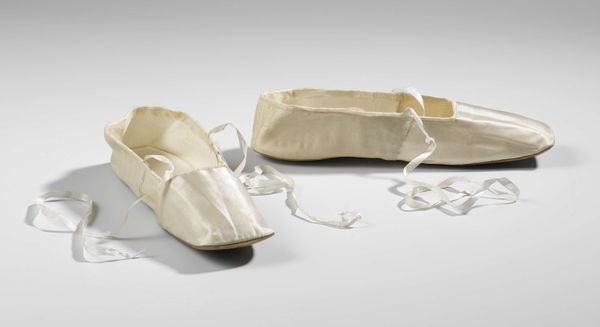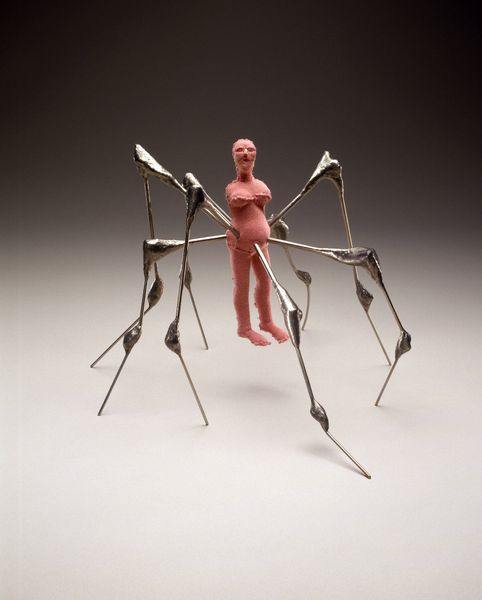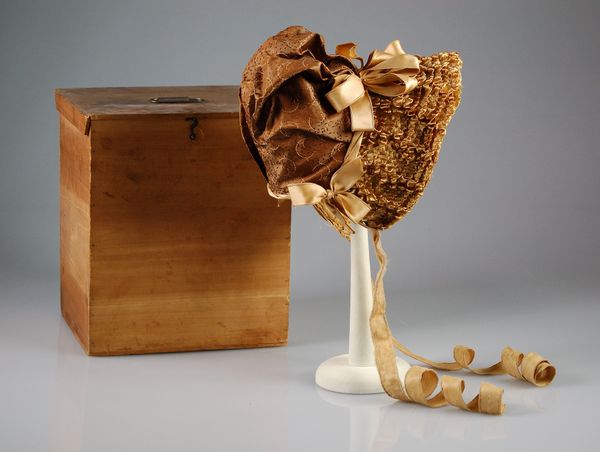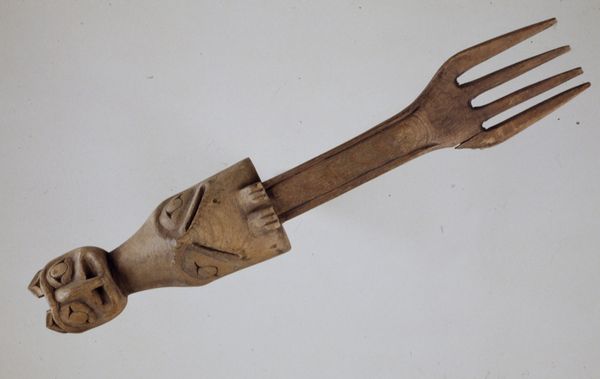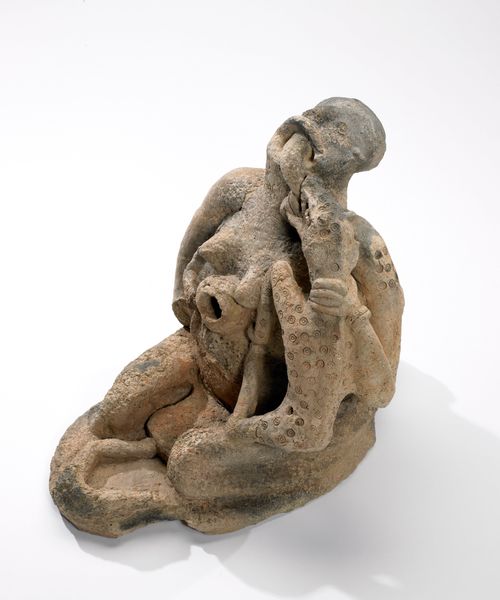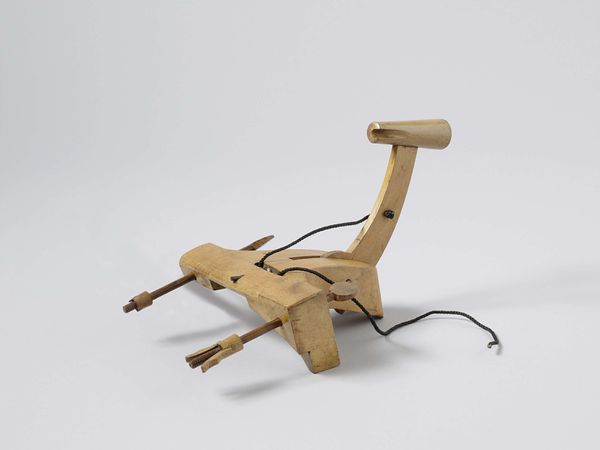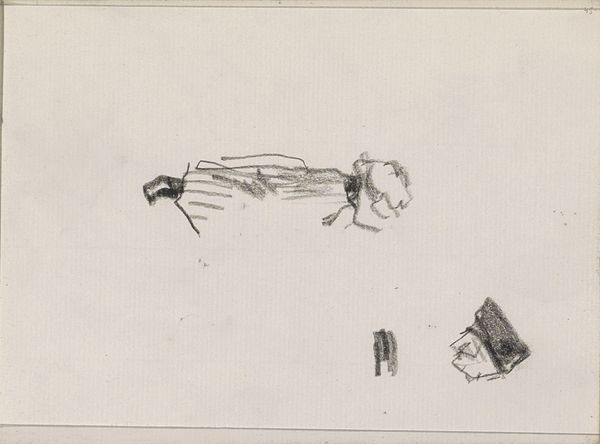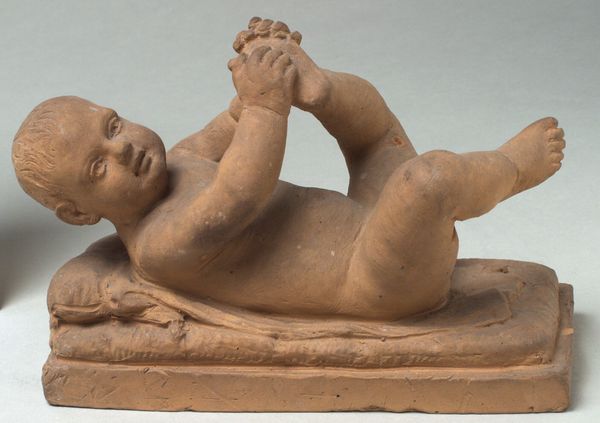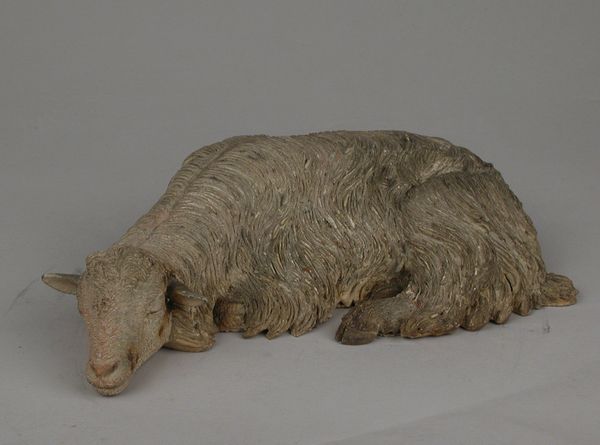
Copyright: © Christine Borland | CC-BY-NC-ND 4.0 DEED, Photo: Tate
Curator: Christine Borland's "Phantom Twins" presents us with a stark visual arrangement. The initial impression is one of unsettling stillness; two pale, roughly-sewn forms lying inert. Editor: Indeed. They evoke a sense of vulnerability, almost like medical specimens or discarded dolls, prompting questions about what societal narratives are projected onto female bodies, particularly in a reproductive context. Curator: The materiality itself—the unbleached fabric and rudimentary stitching—speaks to a kind of anatomical study. Borland often uses such elements to explore ideas around medical ethics and historical practices. The composition guides our eye across the two figures in parallel. Editor: I would also suggest that this parallelism can also be read as a visual metaphor for societal expectations of twin sisters who may be raised to meet unrealistic expectations of sameness. Curator: I see your point about the cultural implications. However, I still think the power of this work lies in its formal qualities: the unsettling stillness and raw, almost clinical, presentation. Editor: Agreed. "Phantom Twins" truly invites contemplation on both formal and socio-political levels. Curator: A fascinating piece, undeniably.
Comments
Join the conversation
Join millions of artists and users on Artera today and experience the ultimate creative platform.
tate 6 months ago
⋮
Borland creates sculptural installations that use the language of medical and forensic science to examine the human condition. 'Phantom Twins' consists of two dolls that replicate those used in the eighteenth century to demonstrate childbirth to medical students. Beneath the stretched leather the skulls are visible. The original dolls would have contained real foetal skeletons, while Borland used plastic replica skulls obtained from an osteological supplier. Borland is working with ideas about the creation of life and the frailty of human existence. Borland is interested in Mary Shelley's creation, the doctor-scientist called Frankenstein. The story of Frankenstein contains many intimations of Mary Shelley's grief at the young deaths of her own children. Gallery label, August 2004
